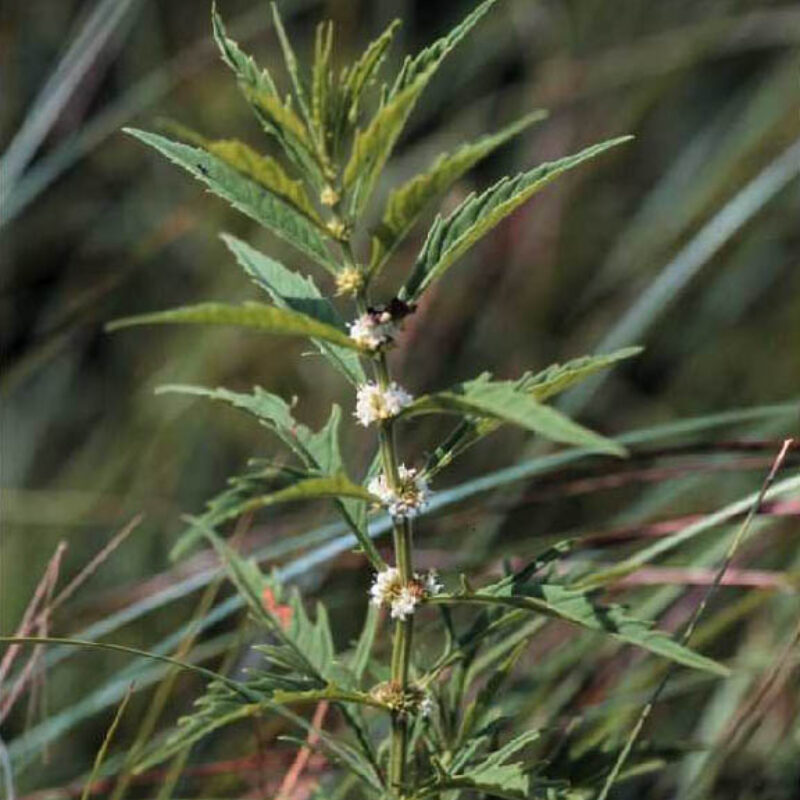WaterhorehoundLycopus americanus
There are several Lycopus species in Minnesota, all with similar clusters of small, white, tubular flowers at the leaf axils, most growing in the same type of habitat at the same time, often next to each other. American Water Horehound is most easily distinguished by its deeply lobed lower leaves, which the others all lack.
USDA symbol: LYAM
General Information
| Plant Type | Forb |
|---|---|
| Height | 1 to 3 feet |
| Light Exposure | Sun, Part Sun |
| Soil Moisture | Wet |
| Bloom Color | White |

Tolerances
| Flooding / Inundation Tolerance | High |
|---|---|
| General Resilience | 7 |
| Salt Tolerance | Low |
| Stress Tolerance | Fire Tolerant |
Pollinator Value: Very High
| Bloom Months | July to September |
|---|---|
| Pollinator Benefit | Insect Pollinated, Provides Nectar, Supports Generalists |
Project Planning
| Project Type | Rain Garden |
|---|---|
| Coefficient of Conservatism | 4 |
| Herbivore Sensitivity | Medium |
| Lifespan | Perennial |
| Rate of Spread | Medium |
| Soil Stabilization | Shallow |
| Vegetative Reproduction | Weakly Clonal |
Range
| County | Aitkin, Anoka, Becker, Beltrami, Benton, Big Stone, Blue Earth, Brown, Carlton, Carver, Cass, Chippewa, Chisago, Clay, Cook, Cottonwood, Crow Wing, Dakota, Dodge, Douglas, Fillmore, Freeborn, Goodhue, Grant, Hennepin, Houston, Isanti, Itasca, Jackson, Kandiyohi, Kittson, Koochiching, Lac qui Parle, Lake, Lake of the Woods, Le Sueur, Lincoln, Lyon, Mahnomen, Marshall, Martin, McLeod, Meeker, Mille Lacs, Morrison, Mower, Murray, Nicollet, Nobles, Norman, Olmsted, Otter Tail, Pennington, Pine, Pipestone, Polk, Pope, Ramsey, Red Lake, Redwood, Renville, Rock, Roseau, Sherburne, Sibley, St. Louis, Stearns, Steele, Swift, Todd, Traverse, Wabasha, Wadena, Waseca, Washington, Watonwan, Wilkin, Winona, Wright, Yellow Medicine |
|---|---|
| Ecoregion | Driftless Area, Lake Agassiz Plain, North Central Hardwood Forests, Northern Glaciated Plains, Northern Lakes and Forests, Northern Minnesota Wetlands, Western Cornbelt Plains |
| Approximate Eco Province | Eastern Broadleaf Forest, Laurentian Mixed Forest, Prairie Parkland, Tallgrass Aspen Parklands |
